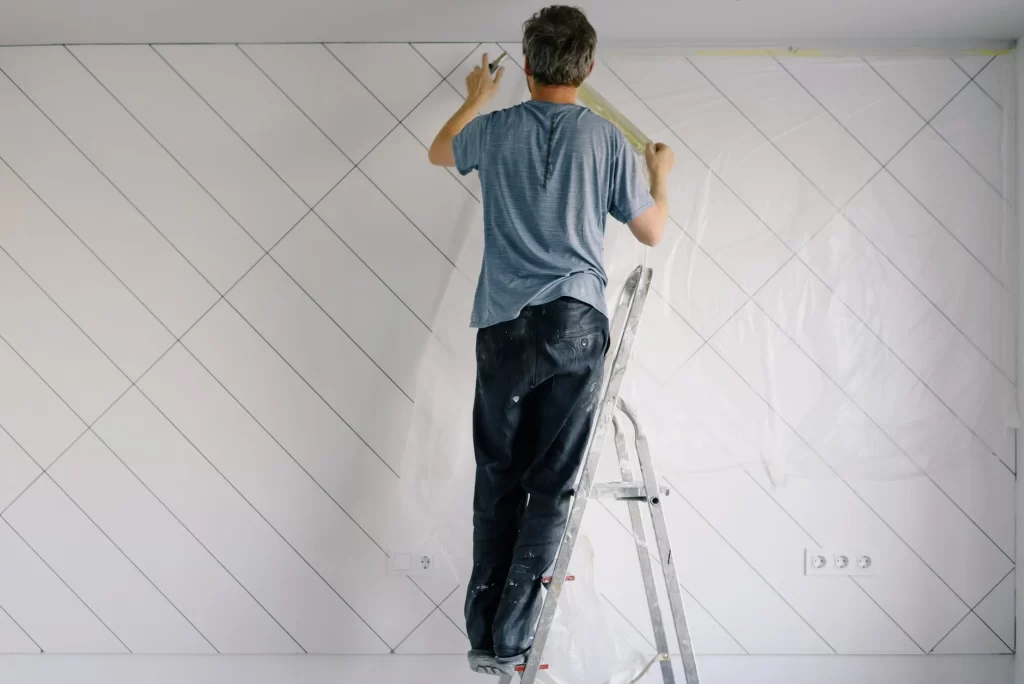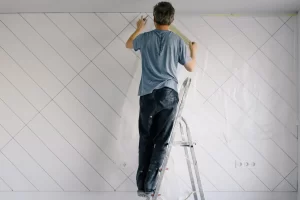Preparing For Exterior Wall Painting
6 min read
Painting the exterior of your house is a great way to give it a fresh, new look and increase its value. It also helps protect against the elements.
The best exterior wall painters in brisbane have binders that combat mildew and fading, and are designed to hold up to harsh weather conditions. They contain quick-evaporating solvents that keep pigments and binders in suspension.
Weather
Painting the exterior of a home or commercial building is a way to revive its appearance and add a layer of protection. However, the weather exerts a continuous influence on painted surfaces and can affect how well your paint job holds up over time. Painting in the best conditions will ensure that your final product is durable and beautiful.
The temperature should be between 60-85 degrees Fahrenheit when painting the exterior of your house. Extreme temperatures may cause paint to crack or peel. You also want to avoid painting when it is raining or there is a chance of rain. Rain will wash away dirt and debris from the surface of the paint and can contaminate the newly applied coats.
Humidity can also affect the performance of a paint job on an exterior wall. The level of humidity should be between 40 and 70% to allow the paint to cure properly. Paint dripping can ruin the appearance of the finished piece if there is too much humidity. It can also prevent the solvents from evaporating from the paint, which can slow down the curing process.
It is important to use a high-quality, durable exterior paint that is designed for the specific climate in which you live. This will protect your home from the elements, and keep it looking good for a long period of time. Brands such as Leyland, Dulux, and EWI offer a range of exterior paints that are suitable for different weather conditions.
The exterior of your house can be painted to increase its value, and make it standout from other houses in the neighborhood. It is important to plan the project carefully and choose a professional painter that will perform the job correctly. If you are planning to sell your property, you may want to consider painting the outside of your house in a neutral color, such as beige or gray, that is attractive to potential buyers.
Early summer or fall is the best time to paint your home’s exterior. The weather is mild, there is little rain and you can allow the paint to cure. If you have to do it during other times of the season, choose a low temperature exterior paint like Sherwin Williams’ Latitude. It can be applied on surfaces as cold as 35 degrees Fahrenheit.
Preparation
Fresh paint can also protect your house from the elements. Before you start painting, make sure the walls are prepared. This preparation can make the difference between a professional-looking finish and one that flakes, cracks or peels within a few years.
You may need to sand down your exterior walls and scrape away any existing paint, depending on their condition. This is a difficult task, but it is necessary to ensure that your new paint adheres properly.
Cleaning the walls is also important. Power washing and soap will remove dirt, mildew, and other debris that may interfere with the adhesion to the new paint. If you have moss or green algae growing on your walls, you can use something like Dulux Trade Weathershield Fungicidal Wash to kill it and prevent it from returning after the painting is finished.
Filling in any gaps or cracks is the next step. This can be done using a flexible masonry paint or wood filler. The surface should then be sanded to create a smooth finish.
Before you begin painting, you should prime the surfaces to be painted with a water-based masonry primer. This will seal the surface, and create a smooth foundation for the new paint. This is important, especially if you’re painting over old paint.
When choosing a primer read the label very carefully. Choose a water-based primer that does not require thinning, and has a mild odor. These are more user-friendly than oil-based primers, and they’re also breathable, so moisture can escape the surface, preventing mould from growing.
Don’t forget to make sure you have the right equipment to complete the job. For example, if you need to work at heights, you’ll need a ladder or scaffolding that can support you safely. If you’re working on a multi-story building, it might be worth investing in some safety harnesses too.
Paint
There are many different types of paints that can be used to cover the exterior of a house. These are designed to withstand the weather conditions that the wall is exposed to. The paint is used to protect the exterior and adds an element of elegance to the building facade.
Water-based emulsion paint is a common choice for home improvement. This type of paint can be found in many home improvement stores under different brand names. These emulsion paints can be easily diluted using water to get the required consistency. There are also ready-to-use paints that do not require any thinner and can be applied directly after the surface preparation.
For the exterior walls of your house, you can also use urethane and oil-based masonry paint. These paints are more durable and can withstand the harsh weather elements, including UV rays. However, they can be quite expensive and require multiple coats to achieve the desired result.
It is a good practice to remove all plants, bushes, and other obstructions before you begin the painting process. This will allow you to see the condition of your walls and any cracks, blemishes or other imperfections that may need to be repaired. The pointing of the brickwork should also be checked and any nails, screws or plugs removed.
Prime the walls before you apply any finish. Primer provides a canvas on which the final coat of painting will adhere. The primers are available in latex or oil-based formulas, and you should choose the one that is right for your specific needs. Oil-based primers work best when painting over oil-based paint or wood. Latex-based primers work well with previous latex paint.
The type of sheen will also influence the performance of the paint. A mirror-like sheen reflects light, while a flat or matte sheen absorbs it. There are a variety of sheens that can be used for interior and exterior painting, including eggshell, satin and semi-gloss.
The fungicidal property of the paint is also important. Fungicidal paints penetrate deep into the concrete plaster and kill or inhibit fungi growth, protecting the surfaces. Some fungicidal fungicides are designed to be self cleaning, as they slowly oxidize and shed a fine calcified residue with each rain. The newest paints for outdoor use contain chemicals that control the shedding so that they do not stain nearby surfaces.
Finish
A fresh coat of exterior painting makes your building appear well-maintained, and it adds value to your property. It also protects the walls from wind and weather damage. Painting the exterior walls of a home or commercial building can be a difficult task that requires special skills. You must take adequate preparation measures before the actual painting, use high-quality brushes and rollers, and apply two coats of paint for a durable and long-lasting result.
There are different types of exterior paint available on the market, including oil-based and latex. You should choose the right one depending on your needs and budget. If you want to make your paint last longer, choose an oil-based gloss paint.
Paints for exteriors are made up of pigments, binders and additives. The pigments in exterior paint are either man-made or mineral powders that give it its color and opacity. Solvents are liquids that evaporate quickly and keep the pigments suspended while they dry. Binders are resins which coalesce after the solvents have evaporated to form the paint. The additives are responsible for controlling the properties of paints, such as the dry time and mildew resistant.
When choosing a paint color, you need to consider the style and era of your building. Pastel shades and neutrals work well in modern homes, while greys and whites bring a touch of class to Victorian and Edwardian styles. You can also experiment with different colors to find the ones that best match your building.
You need to decide if you will use a roller, brush, or sprayer when selecting the paint. If you choose a sprayer, be sure to hand roll the surface afterward for uniform coverage. This will help the paint to absorb into the wall, and it will hide any gaps or creases. It is important to use quality paints, such as Sherwin Williams oil-based alkyd or elastomeric paint. These paints will protect your walls and resist cracking for many years. If you are unsure about the type of paint to choose, consult a professional or visit a home improvement store to get swatches and samples.




